MGP
-
Official Full Name
Matrix Gla Protein -
Overview
The protein encoded by this gene is secreted and likely acts as an inhibitor of bone formation. The encoded protein is found in the organic matrix of bone and cartilage. Defects in this gene are a cause of Keutel syndrome (KS). Two transcript variants encoding different isoforms have been found for this gene. -
Synonyms
matrix Gla protein;Cell growth-inhibiting gene 36 protein;MGLAP;NTI;OTTHUMP00000239335;MGP;GIG36;OTTHUMP00000239337
Recombinant Proteins
- Human
- Mouse
- Zebrafish
- Rhesus macaque
- Rat
- Chicken
- Cattle
- Pig
- Rabbit
- E.coli
- Mammalian Cells
- Human
- HEK293
- Wheat Germ
- In Vitro Cell Free System
- His
- T7
- GST
- S
- Non
- Avi
- Fc
- Myc
Background
What is MGP Protein?
Matrix Gla Protein (MGP) plays an essential role in keeping bones healthy by regulating where calcium gets deposited. Mostly found in the extracellular matrix, it prevents calcium from building up in soft tissues. Osteoblasts, the bone-forming cells, produce MGP to maintain bone strength. Studies with mice show that a lack of MGP leads to weaker bones and more fractures. By ensuring minerals are properly balanced, MGP helps maintain strong bones, making it important in understanding bone disorders like osteoporosis.What is the Function of MGP Protein?
Matrix Gla Protein (MGP) is essential for maintaining vascular health by preventing calcium deposits in arteries and soft tissues, thus averting arteriosclerosis and other cardiovascular issues. Besides safeguarding your blood vessels, MGP plays a role in bone health by regulating calcium, helping keep bones strong and reducing osteoporosis risks. There's also growing interest in MGP concerning broader health impacts, including metabolism and cardiovascular wellbeing, making it a vital component in the conversation around maintaining overall health and vitality.MGP Related Signaling Pathway
Matrix Gla Protein (MGP) plays a crucial role in various signaling pathways, particularly those related to the extracellular matrix (ECM) and bone morphogenetic protein (BMP) pathways. These pathways help regulate calcium deposits, ensuring they don't accumulate in blood vessels or soft tissues, thus preventing cardiovascular issues. MGP's interaction with the vitamin K-dependent pathway is also significant, as vitamin K is vital for activating MGP, opening up opportunities for future research and therapeutic strategies in vascular and bone health.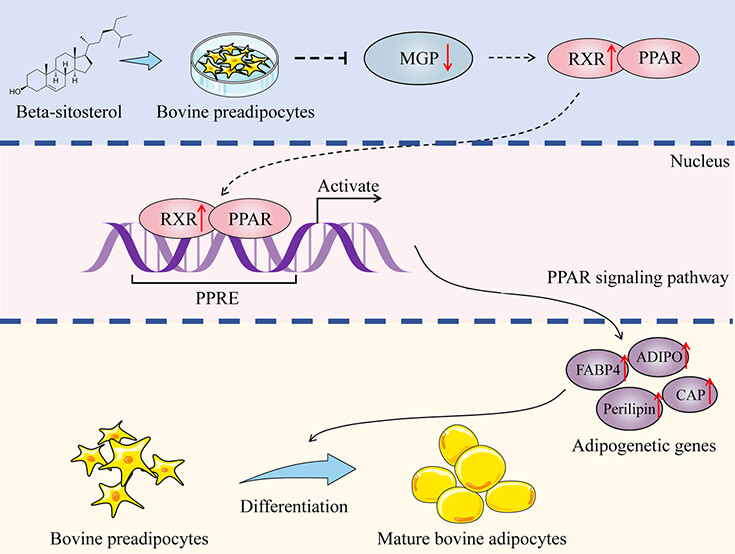
Fig1. Diagram of Beta-sitosterol regulation of bovine preadipocyte differentiation. (Lei Jiang, 2025)
MGP Related Diseases
Matrix Gla Protein (MGP) is crucial in preventing several diseases by inhibiting unwanted calcium deposits in the body. When MGP doesn't function properly, it can lead to arteriosclerosis, a serious cardiovascular condition where arteries harden due to calcification. Beyond the heart, MGP dysfunction is linked to other problems like kidney stones and tissue calcification in organs where calcium shouldn't build up. Its role in bone health means that inadequate MGP can contribute to osteoporosis, making bones more fragile. Additionally, researchers are exploring MGP’s connections to chronic kidney disease and certain cancers, where its calcification-regulating role might be disrupted. Understanding MGP and its influences opens up pathways to potential treatments and preventive measures.Bioapplications of MGP
Matrix Gla Protein (MGP) holds exciting bioapplications, particularly in cardiovascular and bone health. Its ability to prevent arterial calcification opens avenues for developing treatments that maintain flexible, healthy arteries, crucial for preventing heart disease. In bone health, MGP's regulatory role is promising for therapies targeting osteoporosis and enhancing bone regeneration. Its potential extends to regenerative medicine, where it could be used in biomaterials to improve tissue repair and compatibility. As we delve deeper into its capabilities, MGP could revolutionize treatments, offering innovative solutions for long-standing health challenges.Case Study
Case Study 1: Wang M. et al. Mol Oncol. 2020
Matrix Gla protein (MGP) is known for its abnormal expression in many cancers, but its role inside gastric cancer cells is less clear. This study showed high levels of MGP in gastric cancer tissues compared to normal ones. Data from The Cancer Genome Atlas linked MGP overexpression to poor outcomes. Silencing MGP reduced cancer cell growth and movement. MGP interacts with p-STAT5 in the nucleus, enhancing gene activation via the JAK2/STAT5 pathway. This suggests that MGP helps gastric cancer cells grow and survive, making it a potential prognostic marker for this cancer type.-
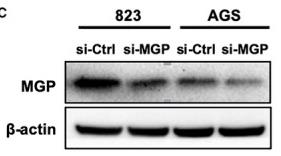 Fig1. The MGP-siRNA1 exhibited better knockdown efficiency and was selected for the following experiments.
Fig1. The MGP-siRNA1 exhibited better knockdown efficiency and was selected for the following experiments. -
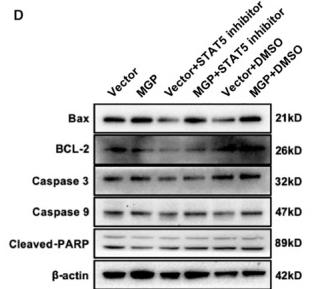 Fig2. The protein levels of apoptosis/DNA damage-associated genes were verified by western blot in MGP-overexpressed AGS cells.
Fig2. The protein levels of apoptosis/DNA damage-associated genes were verified by western blot in MGP-overexpressed AGS cells.
Case Study 2: Zhang M. et al. Exp Cell Res. 2025
In mice, age-related bone loss is linked to senescent cells and reduced bone formation. Matrix Gla protein (MGP), secreted by osteoblasts, is crucial for bone mineralization. Mice lacking MGP show bone weakness and early death. This study with MGP-deficient mice showed reduced bone volume and increased aging markers. Their osteoblasts had DNA damage and diminished bone-forming ability, though recombinant MGP improved osteogenesis via the PI3K-AKT pathway. This suggests MGP helps prevent osteoblast aging, offering potential osteoporosis treatments.-
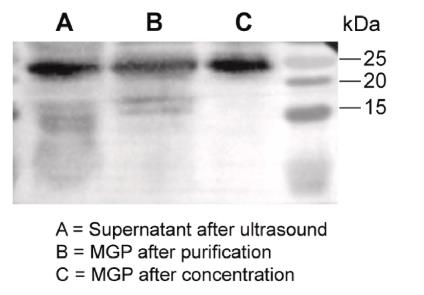 Fig3. Confirmation of hMGP protein using western blot analysis.
Fig3. Confirmation of hMGP protein using western blot analysis. -
 Fig4. Primary osteoblasts were treated with 0, 50, and 100 ng/mL hMGP, and ALP staining was performed.
Fig4. Primary osteoblasts were treated with 0, 50, and 100 ng/mL hMGP, and ALP staining was performed.
Quality Guarantee
High Purity
-
.jpg) Fig1. SDS-PAGE (MGP-95M)
Fig1. SDS-PAGE (MGP-95M) -
.jpg) Fig2. SDS-PAGE (MGP-7010C)
Fig2. SDS-PAGE (MGP-7010C)
Involved Pathway
MGP involved in several pathways and played different roles in them. We selected most pathways MGP participated on our site, such as Endochondral Ossification,Validated transcriptional targets of AP1 family members Fra1 and Fra2, which may be useful for your reference. Also, other proteins which involved in the same pathway with MGP were listed below. Creative BioMart supplied nearly all the proteins listed, you can search them on our site.
| Pathway Name | Pathway Related Protein |
|---|---|
| Endochondral Ossification | SOX9A,FRZB,RUNX3,KIF3A,CST5,ADAMTS1,PTHLHA,SERPINH1,SOX5,DDR2 |
| Validated transcriptional targets of AP1 family members Fra1 and Fra2 | IVL,CXorf15,BGLAP,USF2 |
-
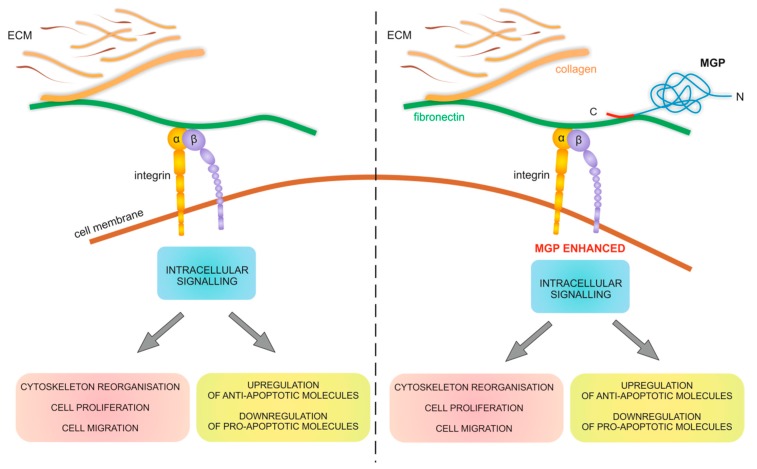 Fig1. Schematic drawing of interaction between cell and ECM mediated by fibronectin and MGP. (Karolina Sterzyńska, 2018)
Fig1. Schematic drawing of interaction between cell and ECM mediated by fibronectin and MGP. (Karolina Sterzyńska, 2018) -
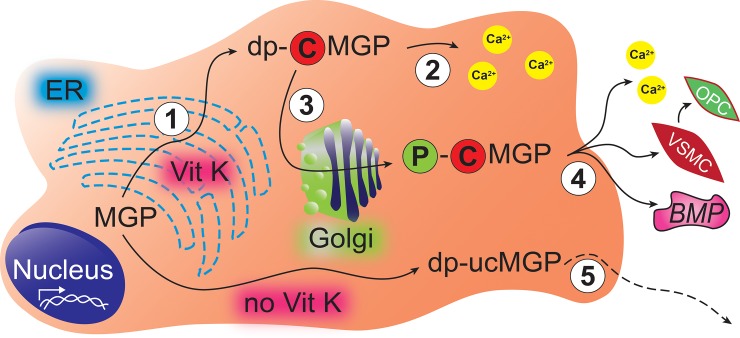 Fig2. Cardiomyocytes, interstitial, endothelial and vascular smooth muscle cells of the human heart express MGP. (Fang-Fei Wei, 2018)
Fig2. Cardiomyocytes, interstitial, endothelial and vascular smooth muscle cells of the human heart express MGP. (Fang-Fei Wei, 2018)
Protein Function
MGP has several biochemical functions, for example, calcium ion binding,extracellular matrix structural constituent,protein binding. Some of the functions are cooperated with other proteins, some of the functions could acted by MGP itself. We selected most functions MGP had, and list some proteins which have the same functions with MGP. You can find most of the proteins on our site.
| Function | Related Protein |
|---|---|
| protein binding | PKP4,MAGEB6,SERPINB1A,FTL,IL1R2,WBP2,GMCL1P1,GM5506,ARHGEF4,SUV39H1 |
| extracellular matrix structural constituent | COL11A1B,COL2A1B,COL27A1A,IMPG2,FBLN1,MATN1,LAMA4,MFAP5,COL4A4,COL4A1 |
| structural constituent of bone | BGLAP,BGLAP2,BGLAP-RS1 |
| calcium ion binding | ADAM8,PLCB4,PCDH2AB11,PCDHB14,KCNIP3B,CASQ1,PROZ,STIM1,F7,DOC2D |
Interacting Protein
MGP has direct interactions with proteins and molecules. Those interactions were detected by several methods such as yeast two hybrid, co-IP, pull-down and so on. We selected proteins and molecules interacted with MGP here. Most of them are supplied by our site. Hope this information will be useful for your research of MGP.
p27958-pro_0000037576
Resources
Related Services
Related Products
References
- Viegas, CSB; Rafael, MS; et al. Gla-Rich Protein Acts as a Calcification Inhibitor in the Human Cardiovascular System. ARTERIOSCLEROSIS THROMBOSIS AND VASCULAR BIOLOGY 35:399-408(2015).
- Xiao, LP; Esliger, A; et al. Nuclear Fibroblast Growth Factor 2 (FGF2) Isoforms Inhibit Bone Marrow Stromal Cell Mineralization Through FGF23/FGFR/MAPK In Vitro. JOURNAL OF BONE AND MINERAL RESEARCH 28:35-45(2013).


